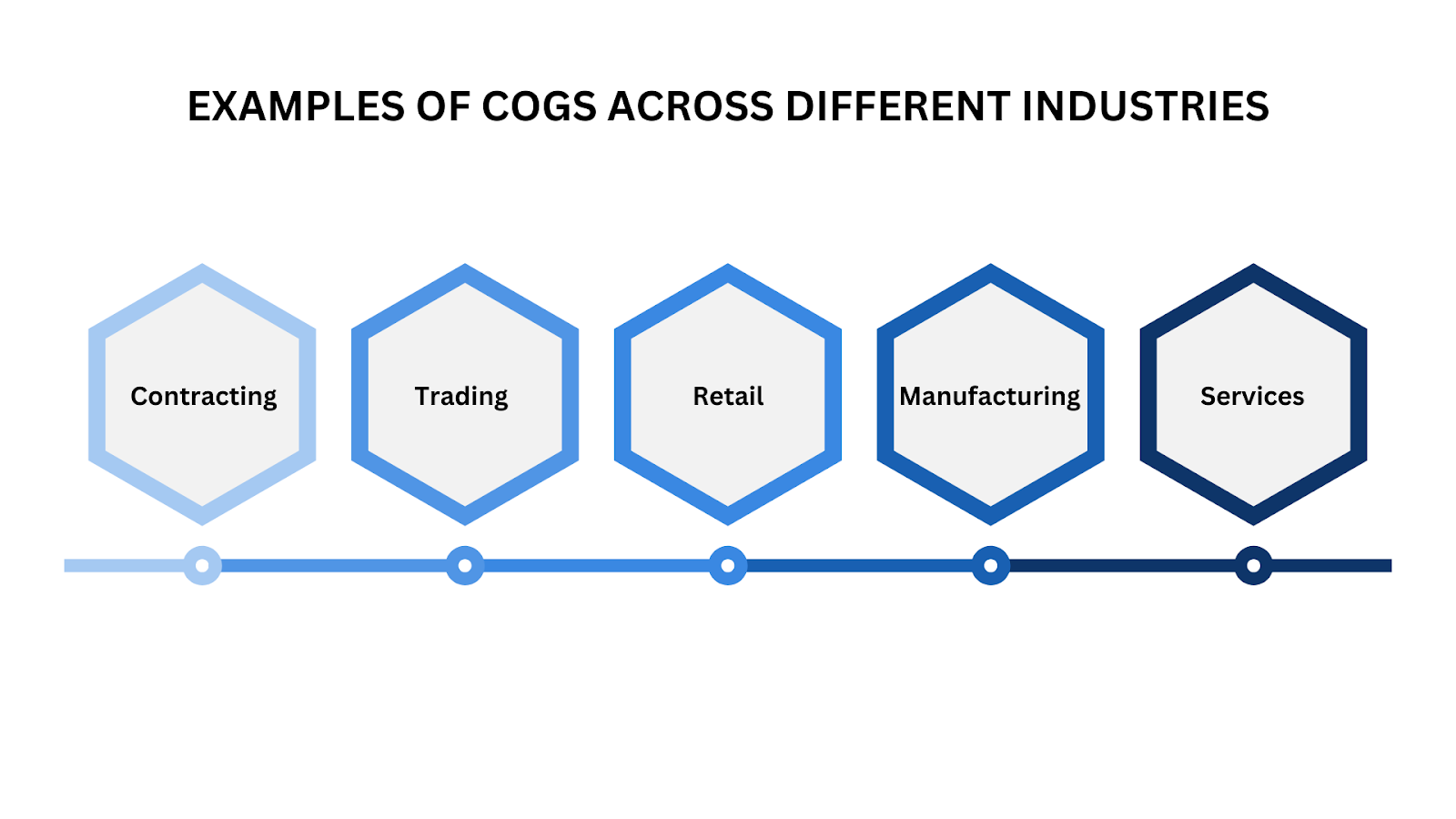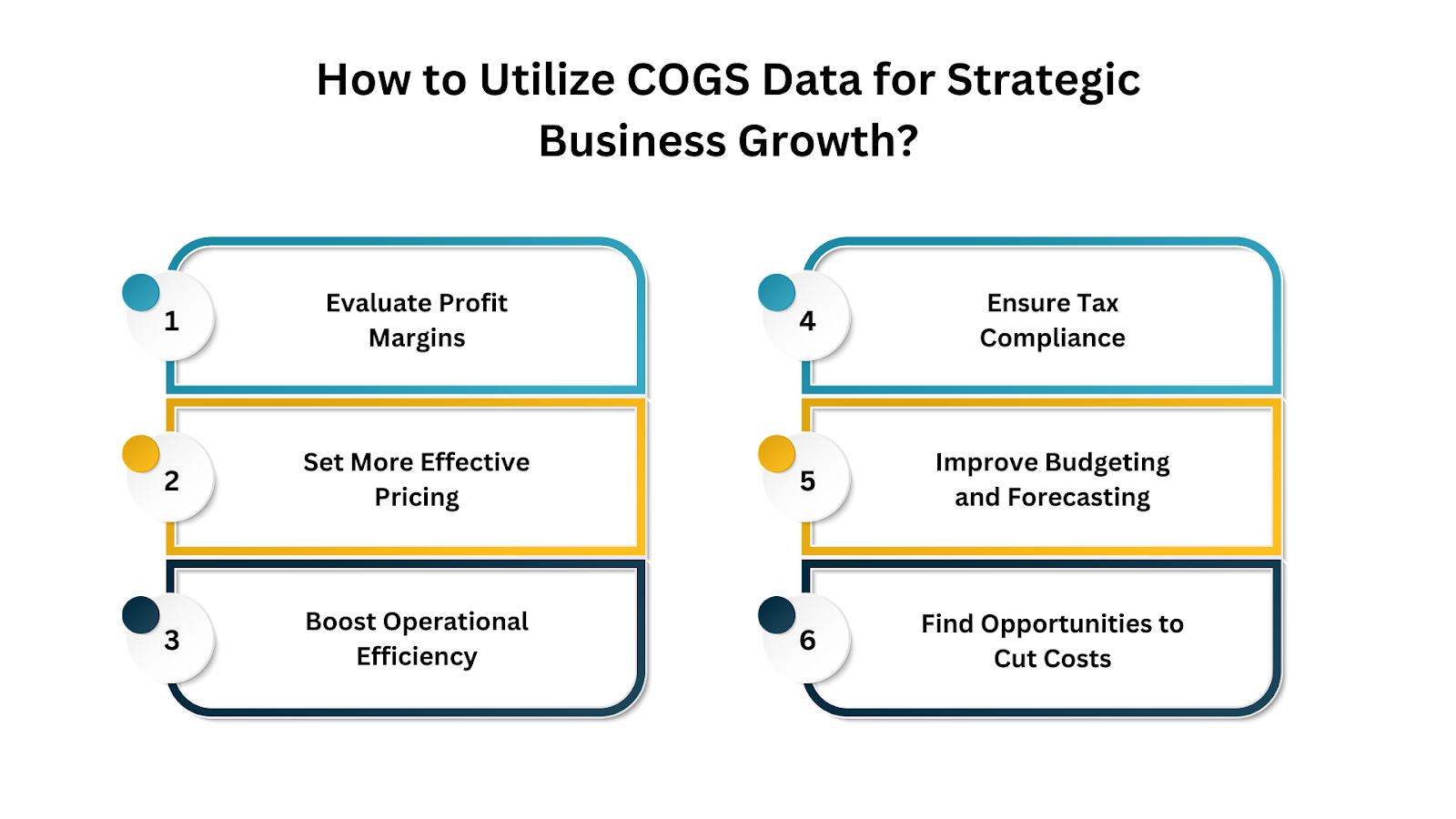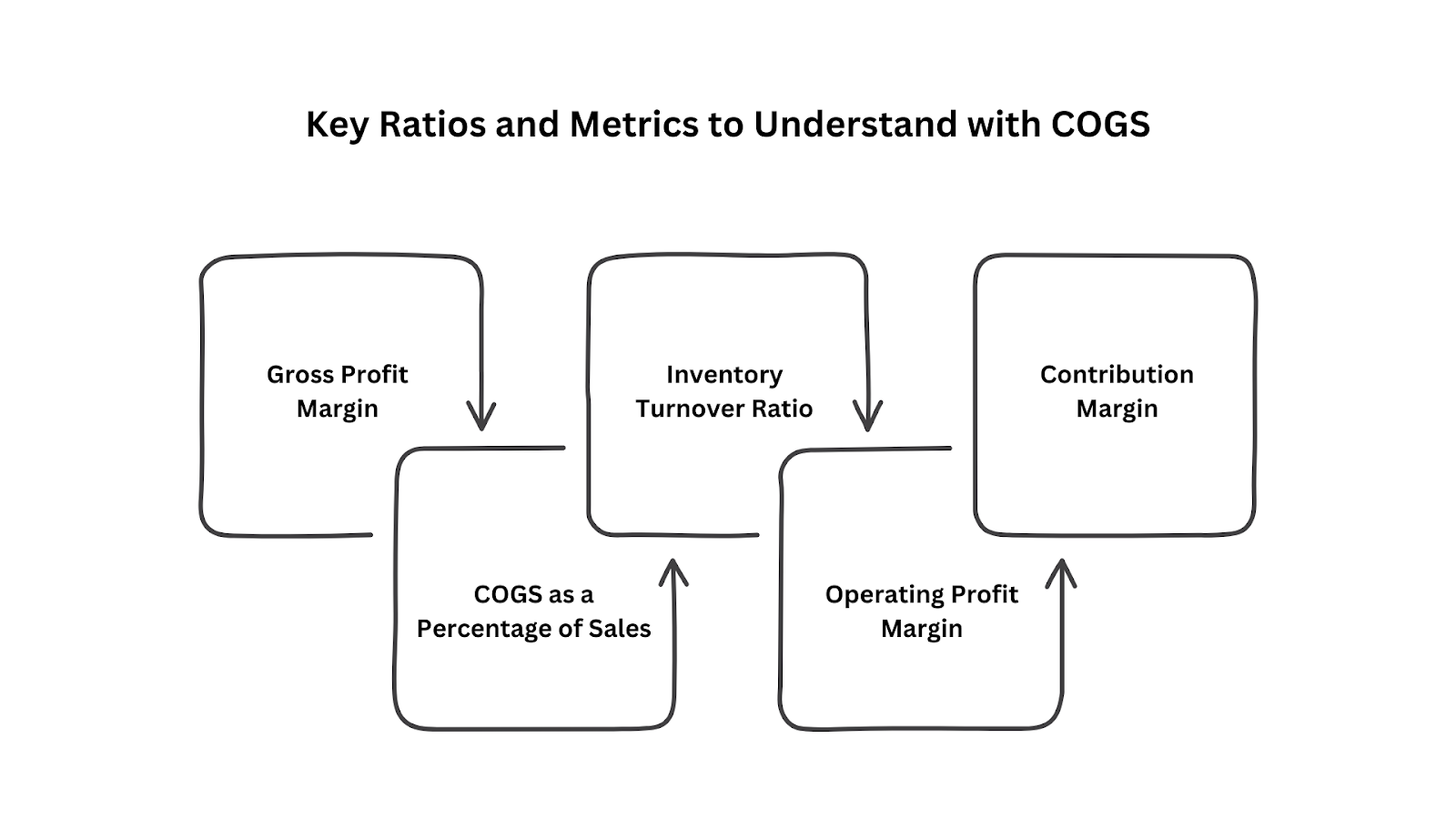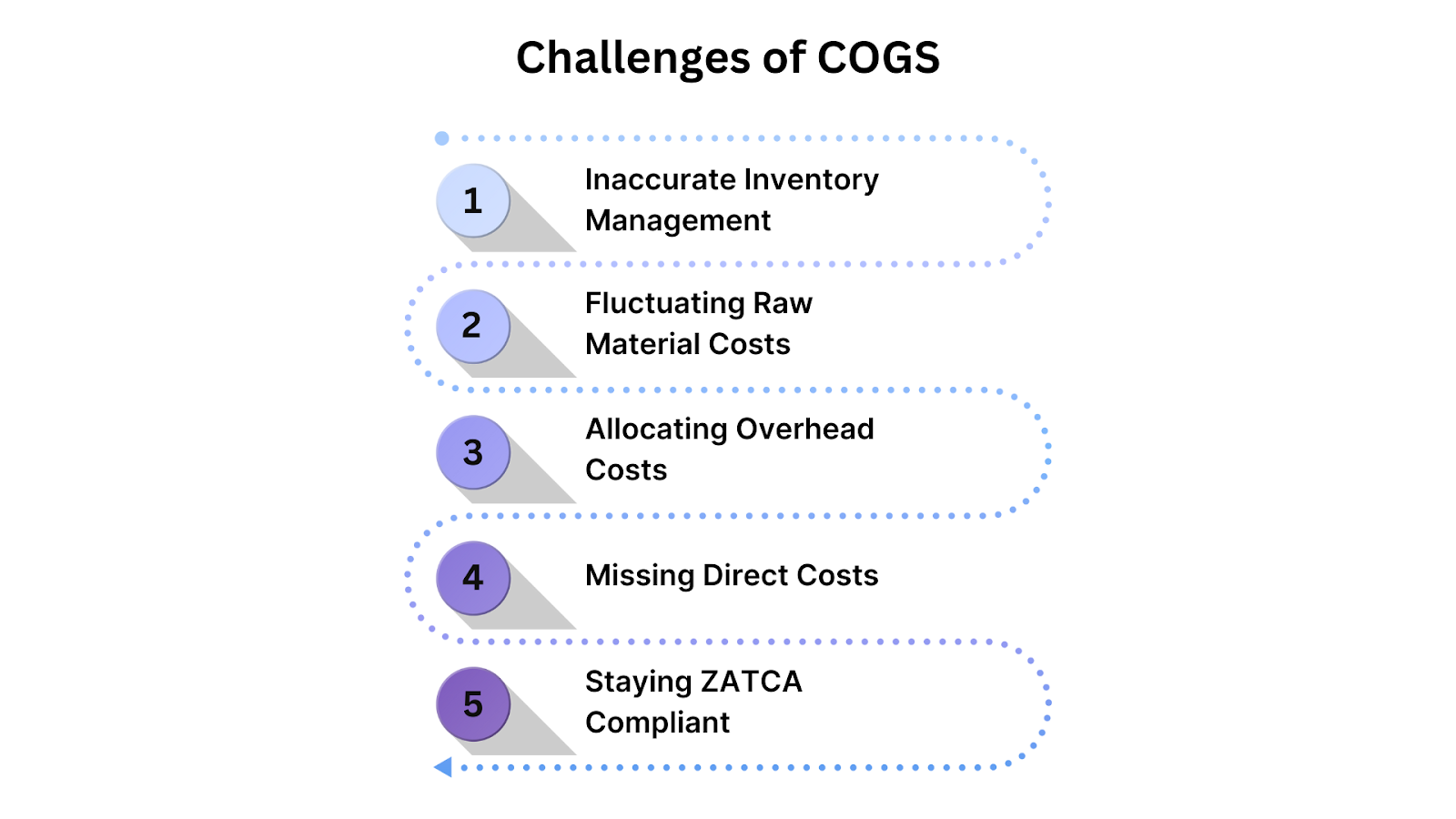.jpg)
Are you accurately calculating your Cost of Goods Sold (COGS)? Or are inefficiencies slipping through the cracks, costing your business more than it should?
If you're a business leader in Saudi Arabia, particularly in industries like manufacturing, contracting, or retail, understanding COGS is essential not only for your profitability but for staying compliant with local tax regulations.
You might be relying on outdated spreadsheets or manual calculations, but there’s a better way. An ERP system tailored for Saudi businesses can automate these calculations, ensuring accuracy, real-time data, and ZATCA compliance. The right ERP solution doesn’t just streamline COGS; it gives you the insights to make smarter decisions, lower costs, and improve margins.
This blog will explain how to calculate COGS effectively and why a modern ERP system is a game-changer. Let’s dive in.
Cost of Goods Sold (COGS) refers to the direct costs incurred in producing a business's goods or services. These costs include raw materials, labor, and overheads directly involved in production. Understanding COGS is essential for companies aiming to optimize profitability, manage expenses, and set appropriate pricing strategies.
Let’s break it down with a simple example:
If you’re running a construction business in Saudi Arabia. You purchase steel, cement, and other raw materials worth SAR 100,000 for a new building project. You also hire a team of workers, with direct labor costs of SAR 50,000. The total COGS for this project is SAR 150,000.
By calculating COGS, you can assess your gross profit margin by subtracting this cost from the total revenue earned from the sale of the building. This figure reveals your business’s profitability and helps you identify areas where you can optimize costs.
The role of ERP systems in managing COGS is becoming increasingly vital.
The enterprise resource planning market in Saudi Arabia is projected to reach US$ 469.2 million by 2030, with a compound annual growth rate of 15.3% from 2024 to 2030As more businesses adopt ERP solutions, they can automate COGS calculations and gain real-time insights, making tracking and managing production costs easier.
Also Read: ERP Implementation Success Stories: Real-World Examples
Understanding what COGS is lays the foundation, but how do you actually calculate it? Let’s explore that next.
Calculating COGS is straightforward once you understand its components. The formula is as follows:
COGS = Beginning Inventory + Purchases - Ending Inventory
Let’s take a quick look at the components of COGS:

Businesses often deal with construction materials and labor costs in the contracting industry. Imagine a construction company working on a commercial project. At the start of the year, they have SAR 200,000 worth of materials (beginning inventory). During the year, they purchase another SAR 500,000 worth of steel, concrete, and tools (purchases). At the end of the year, they have SAR 150,000 worth of leftover materials (ending inventory).
The COGS would be:
COGS = 200,000 + 500,000 - 150,000 = SAR 550,000
This helps the company assess whether its project margins are on track and identify potential inefficiencies.
For a trading business, let’s say a company in Saudi Arabia imports electronics. At the start of the year, their inventory of gadgets was at SAR 300,000. They purchase an additional SAR 800,000 worth of inventory from suppliers. At the year-end, their remaining stock is valued at SAR 250,000.
The COGS would be:
COGS = 300,000 + 800,000 - 250,000 = SAR 850,000
The business can use this figure to track its sales performance, pricing strategy, and profitability over time.
A retail business like a fashion store will calculate its COGS based on the clothing inventory. Let’s assume they start the year with SAR 100,000 in inventory. They purchase an additional SAR 500,000 worth of clothing throughout the year. By the end of the year, they have SAR 120,000 worth of unsold inventory.
The COGS would be:
COGS = 100,000 + 500,000 - 120,000 = SAR 480,000
This helps the retailer determine how much they’ve spent to sell their products and assess how well their products are moving in the market.
In the manufacturing sector, calculating COGS is essential to understand how production costs affect profitability. Suppose a furniture manufacturer begins the year with SAR 150,000 in wood and components (beginning inventory). During the year, they purchase SAR 600,000 worth of raw materials. They have SAR 180,000 worth of leftover raw materials at the year's end.
The COGS would be:
COGS = 150,000 + 600,000 - 180,000 = SAR 570,000
By calculating COGS, the manufacturer can evaluate their production efficiency, identify areas to cut costs, and ensure they are pricing their products profitably.
Service businesses, such as IT services companies, also calculate COGS, though it primarily includes direct costs like salaries for service staff and tools. Let’s say the company has a beginning inventory of SAR 50,000 in tools and software. They purchase SAR 200,000 worth of new software licenses and hardware. At the end of the period, the remaining inventory is SAR 40,000.
The COGS would be:
COGS = 50,000 + 200,000 - 40,000 = SAR 210,000
This allows the company to evaluate how its direct costs impact profitability, especially in service delivery, and adjust pricing or operational strategies as needed.
With the calculation process clear, let’s examine what costs should and shouldn’t be included in your COGS.
The Cost of Goods Sold (COGS) includes the direct expenses involved in the creation of products that a business sells. These costs are primarily variable, such as the cost of materials and labor, but can also include some fixed costs, like factory overhead.
A simple way to determine if an expense falls under COGS is by asking: Would this cost still exist if production stopped? If the answer is no, it likely belongs in COGS.
Typical expenses that are included in COGS are:
On the flip side, certain costs do not belong in COGS. These often relate to business operations and include:
Additionally, any goods that remain unsold at the end of an accounting period are not part of COGS. Instead, they are accounted for as inventory in the balance sheet.
Now that we know what makes up COGS, let’s look at how different accounting methods affect its calculation.
When calculating COGS, selecting the right accounting method can significantly affect how your business reports profits, handles inventory, and prepares for tax season. Your chosen method should reflect your business operations, industry needs, and long-term goals.
The two most common methods for calculating COGS are FIFO (First-In, First-Out) and LIFO (Last-In, First-Out).
Let’s take a closer look at each:
For businesses in Saudi Arabia, a ZATCA-compliant ERP system can simplify inventory tracking and automate these processes. With a simple ERP solution, you can ensure that your COGS calculations are accurate and compliant with local tax regulations, saving you time and reducing the risk of errors.
Need help managing COGS and staying compliant? HAL ERP provides a seamless, ZATCA-compliant solution to streamline your accounting processes. Get started today!
Also Read: ERP Software Comparison 2025: Choose the Best for Your Business
Once you’ve chosen the right method, here are some smart tips to ensure your COGS calculations are accurate.

Calculating COGS accurately is vital for understanding your business’s profitability and managing costs effectively. Here are some smart tips to ensure you're on the right track:
Now that you’ve got accurate COGS data, let’s explore how to use it for smarter, more strategic decisions.

Now that you've calculated your COGS, it’s time to put that information to work. Here’s how you can use it to make smarter decisions that will drive your business:
To make the most of your COGS data, let’s dive into key ratios and metrics that help you assess financial health.

Once you have your COGS data, it’s essential to use it to evaluate your business’s health and efficiency. Here are a few key ratios and metrics you can calculate using COGS, with examples from the target industries to help you see how they apply in real-world scenarios:
This ratio shows how much profit you make after covering the cost of goods sold. It’s calculated by subtracting COGS from revenue, then dividing by revenue. A high gross profit margin indicates your business is efficiently managing production costs.
Formula:
Gross Profit Margin = (Revenue - COGS) / Revenue x 100
Example:
Gross Profit Margin = (500,000 - 300,000) / 500,000 x 100 = 40%
This means the company retains 40% of its revenue after covering the cost of goods sold, which can be used for other expenses and profit.
This metric helps you see what portion of your sales is consumed by production costs. A rising percentage may indicate inefficiencies or increased costs.
Formula:
COGS Percentage = COGS / Revenue x 100
Example:
A contracting company has a revenue of SAR 1,200,000 and COGS of SAR 720,000.
COGS Percentage = 720,000 / 1,200,000 x 100 = 60%
Here, 60% of the revenue is spent on the cost of materials and labor, leaving 40% for profit and overhead.
This ratio measures how quickly your inventory is sold and replaced. The higher the ratio, the more efficiently you are managing stock and production.
Formula:
Inventory Turnover = COGS / Average Inventory
Example:
A trading company sells SAR 500,000 worth of goods and has an average inventory value of SAR 150,000.
Inventory Turnover = 500,000 / 150,000 = 3.33
This means the company sells and replaces its inventory about 3.33 times a year, which indicates good inventory management.
This ratio measures the proportion of revenue left after covering both variable and fixed production costs, including COGS. It reflects how well your business controls its operating expenses.
Formula:
Operating Profit Margin = Operating Income / Revenue x 100
Example:
A manufacturing company has an operating income of SAR 250,000 and total revenue of SAR 1,000,000.
Operating Profit Margin = 250,000 / 1,000,000 x 100 = 25%
This means the company retains 25% of its revenue after covering both production and operational costs.
This metric shows how much revenue is left after covering variable costs (including COGS) to contribute towards fixed costs and profit.
Formula:
Contribution Margin = (Revenue - Variable Costs) / Revenue x 100
Example:
A services business offers consulting with a total revenue of SAR 800,000 and variable costs (including COGS like contractor fees) of SAR 400,000.
Contribution Margin = (800,000 - 400,000) / 800,000 x 100 = 50%
This means the company generates 50% of its revenue to cover fixed costs and profit after paying for variable expenses.
With your ratios in hand, it’s important to understand how COGS compares to related financial metrics.
When reviewing your business’s financials, it’s crucial to understand the differences between COGS, Cost of Revenue, and Operating Expenses. Though these terms are often used interchangeably, each represents a distinct category of costs that impacts your bottom line in different ways.
To make these differences clearer, here’s a simple comparison table:
Now that we’ve clarified the differences, let’s address the challenges that come with managing COGS.

Tracking Cost of Goods Sold (COGS) can be tricky, and businesses often face a few hurdles when it comes to getting it right. However, these challenges can be tackled with a proactive approach. Let’s take a look at the common problems and how you can solve them:
If your inventory isn’t accurately tracked, your COGS figures will be off, leading to problems with profit margins and tax filings.
In industries like manufacturing or trading, the price of raw materials can change quickly, making it hard to keep track of accurate COGS. This can distort financial reporting and impact profitability.
Allocating overhead costs—like factory utilities or equipment maintenance—can be a headache, and without clear distribution, it’s easy to get COGS wrong.
Sometimes, businesses overlook direct costs like shipping or labor, which can lead to underreported COGS.
For businesses in Saudi Arabia, staying compliant with ZATCA regulations while calculating COGS can be complex. Errors in this area could result in penalties or missed tax deductions.
Also Read: ERP vs CRM: Understanding the Key Differences for Your Business
With the challenges in mind, let’s see how HAL ERP can make managing and optimizing your COGS simpler and more efficient.
HAL ERP is designed to simplify business operations for small and medium-sized businesses in Saudi Arabia. With its user-friendly interface and robust features, HAL ERP provides a comprehensive solution to streamline processes, ensure compliance, and drive efficiency.
Here’s how HAL ERP can make a difference for your business:
As many of our clients have discovered, the right ERP system can completely transform how you manage your cost structures.
“After implementing HAL ERP, we got to accurately track our COGS. We were able to capture all our direct and indirect costs and effectively track our COGS, helping us understand our GP better.”
— Omar Zubaidi, GM, Al Homaidhi
To see how HAL ERP has helped businesses like yours thrive in Saudi Arabia, check out our case studies and testimonials.
Accurately calculating COGS is essential for understanding your business’s profitability and making informed decisions. With the right tools and methods, you can gain better insights into costs and improve your pricing strategy.
HAL ERP makes tracking COGS easier by automating the process, ensuring compliance, and offering real-time data.
Looking to simplify your COGS calculations and boost overall business efficiency? Let HAL ERP help you streamline your financial operations. Book a free demo today!
Ali Khan has successfully led ERP implementations across Saudi enterprises with 5,000+ employees. His deep understanding of costing and operations makes him a trusted expert in streamlining business efficiency.
Mohamed Azher, Co-founder & CTO at HAL Simplify, brings hands-on expertise in local compliance and ERP innovation, ensuring HAL ERP remains ZATCA-compliant and future-ready.
“HAL ERP simplified our costing and ZATCA compliance; it’s built for how Saudi businesses operate.”
Explore more client success stories.